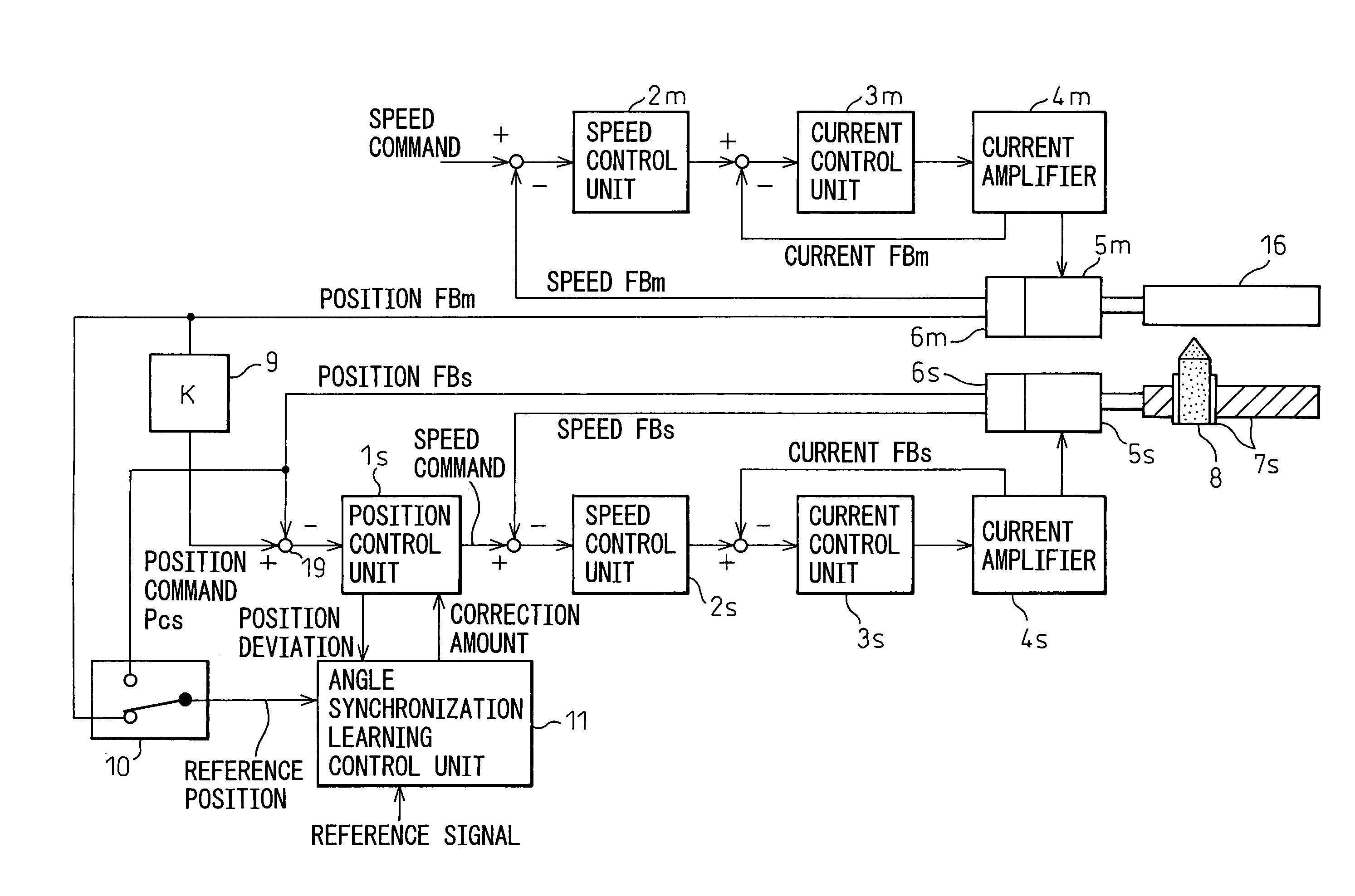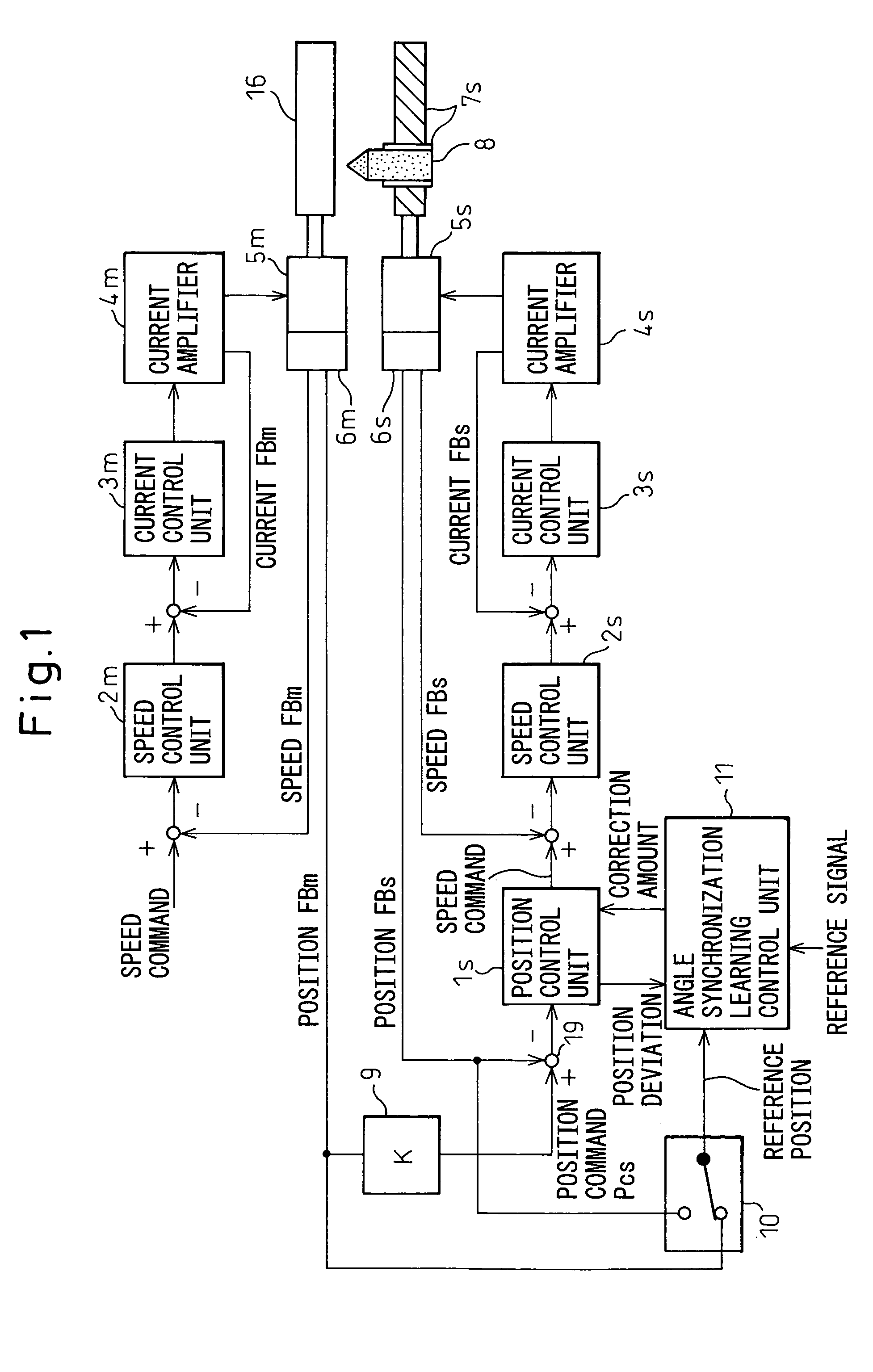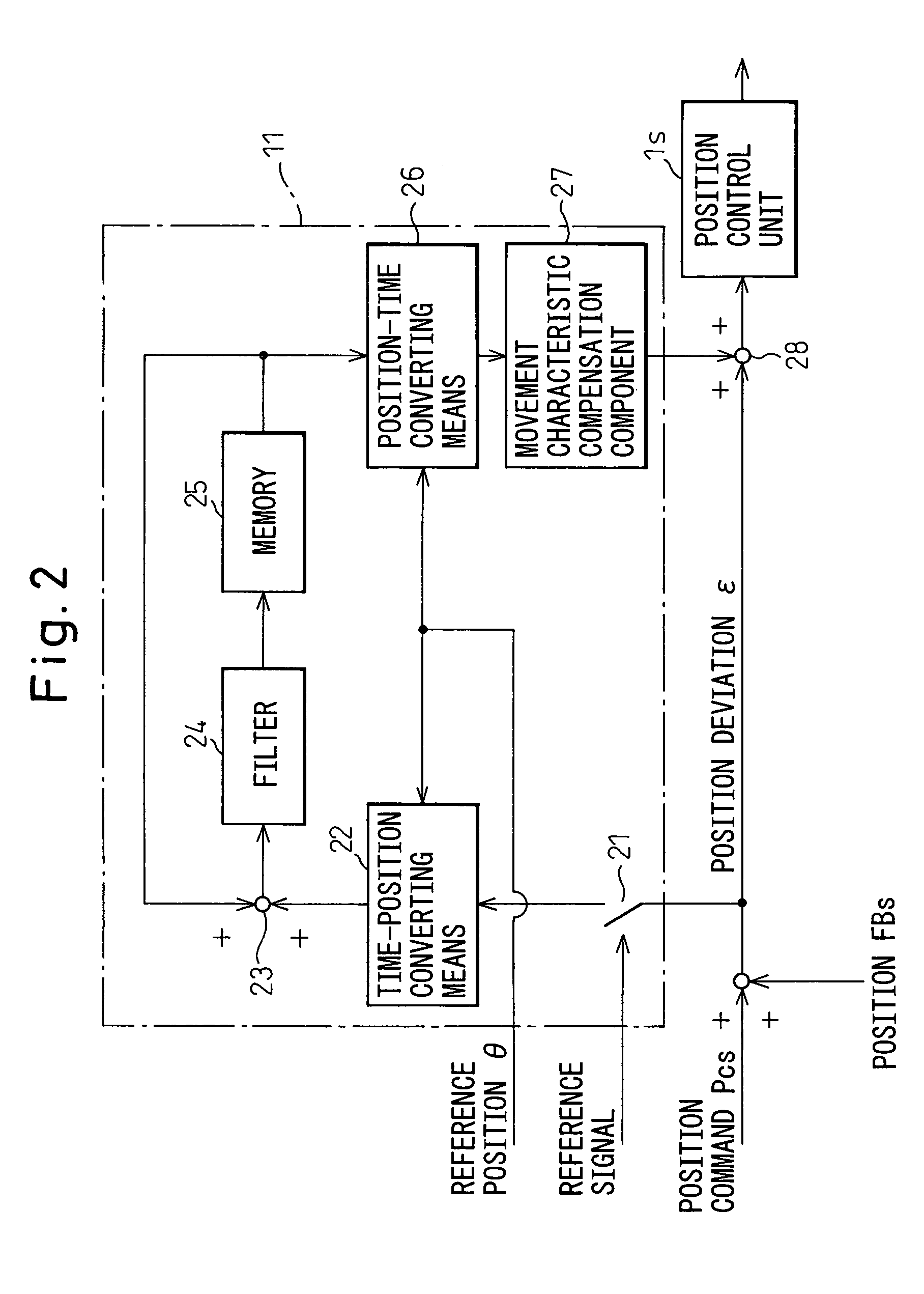Threading/tapping control apparatus
a control apparatus and threading technology, applied in the direction of electric programme control, program control, instruments, etc., can solve the problems of large synchronization error, degraded threading precision, and synchronization error between workpiece and tool, so as to reduce synchronization error and reduce synchronization error
- Summary
- Abstract
- Description
- Claims
- Application Information
AI Technical Summary
Benefits of technology
Problems solved by technology
Method used
Image
Examples
first embodiment
[0025]Below, an explanation will be given of embodiments of the present invention together with the drawings. FIG. 1 is a block diagram of the present invention. This embodiment is an example of threading a workpiece 16. In this example, a workpiece 16 is rotated by a master motor 5m, and a tool (cutting tool) 8 is moved in the axial direction of the center of rotation of the workpiece 16 by a ball screw / nut mechanism 7s driven by a slave motor 5s.
[0026]A speed command output from a host controller such as numerical control unit is subtracted by a speed feedback from a position and speed detector 6m for detecting the position and speed of the master motor 5m and attached to the master motor 5m to find the speed deviation. A speed control unit 2m performs proportional, integrated, or other speed loop control based on the speed deviation and finds a torque command (current command). This torque command (current command) is subtracted by a current feedback detected by a current detect...
second embodiment
[0055]The control system of the master motor 5m and the slave motor 5s basically resembles that of the second embodiment, but differs in the point that the position command Pcs to the slave motor 5s is found from the position command Pcm to the master motor 5m by a command processing means 14. Further, it is differs in the point that angle synchronization learning control units 13m′ and 13s′ provided in the master motor 5m and the slave motor 5s store the correction data at the time of the forward rotation (forward movement) and reverse rotation (backward movement) of the tapper 15, the correction data is selected according to the difference of the rotation direction, and the correction amount is found.
[0056]FIG. 8 is a detailed block diagram of the angle synchronization learning control units 13m′ and 13s′ in this third embodiment. The difference from the angle synchronization learning control units of the first and second embodiments of FIG. 2 resides in that the memory 25 is prov...
third embodiment
[0057]In this third embodiment, the tapper 15 is positioned at the position for tapping the workpiece 16, the position command Pcm to the master motor 5m is output to start the loop processing of the position, speed, and current including the learning control processing, and the master motor 5m and the slave motor 5s are synchronously driven. In this case, the processing with respect to the master motor 5m is the same as that of the flowchart of FIG. 5, the command position Pcm(n) to the master motor 5m is read at steps 100 and 101 and, at the same time, the position feedback of the master motor 5m is read and the position deviation ε is found at step 102. Further, the processing of step 103 and on is executed to control the master motor 5m.
[0058]Further, the processing with respect to the slave motor 5s reads the position feedback of the slave motor 5s at step 100 of FIG. 5. At step 101, the command position Pcm(n) to the master motor 5m is read. The command position Pcm(n) is mul...
PUM
| Property | Measurement | Unit |
|---|---|---|
| rotation | aaaaa | aaaaa |
| rotational speed | aaaaa | aaaaa |
| acceleration | aaaaa | aaaaa |
Abstract
Description
Claims
Application Information
 Login to View More
Login to View More - R&D
- Intellectual Property
- Life Sciences
- Materials
- Tech Scout
- Unparalleled Data Quality
- Higher Quality Content
- 60% Fewer Hallucinations
Browse by: Latest US Patents, China's latest patents, Technical Efficacy Thesaurus, Application Domain, Technology Topic, Popular Technical Reports.
© 2025 PatSnap. All rights reserved.Legal|Privacy policy|Modern Slavery Act Transparency Statement|Sitemap|About US| Contact US: help@patsnap.com



